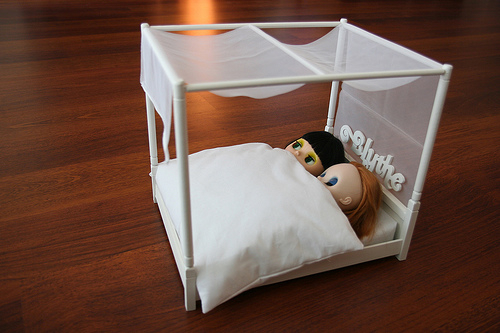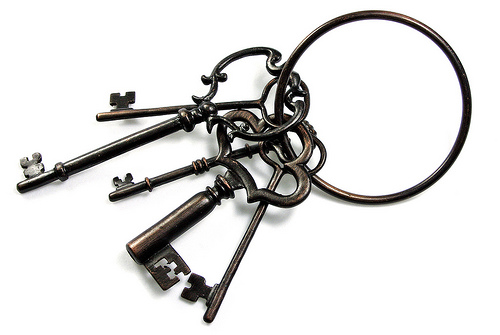Making the decision to move in together is a huge and exciting step in your relationship. It’s a strong statement of commitment and it shows how devoted you are to each other. In relationships where one or both partners have an ASD, it can still be an exciting step, but the transition change can be more overwhelming, due to the fear of unfamiliarity. However, with careful discussion and step-by-step planning, you can make your “merging” experience start off on a good note.
1. Take it seriously.
Making the decision to move in together is not to be taken casually. If god forbids your relationship ends, moving out can be a bitch. So if your gut is not telling you to do it yet, then WAIT.
2. Do at least one “cohabitation experiment”. Two or three times is even better.
This does not mean simply staying the night or the weekend at your significant other’s place. Plan for one of you to pack enough things you’ll be needing for 2-3 weeks, then stay in the other one’s home as if you were already living together. This alone will give you a good taste of what life would be like if you lived together. Do not worry about the setup or decor yet — focus on how you interact as a couple while you’re sharing the same living space.
If you and your partner reside in the same area, and can still commute to your school or workplace, these experiments will be fairly easy to do. If you are in a long-distance relationship, you’ll have to make a few more arrangements. But believe me, it is worth it. When you finally move in together, you’ll be more comfortable because you’ll have gained a knowledge of each one’s living habits. Your man may have a habit of not always flushing after peeing in the toilet, or your woman may have a habit of taking over the entire bathroom counter with her hair styling tools, but at least you’ll both know what to expect.
3. Decide whether one of you be moving into your partner’s current residence, or both of you will move into an entirely different place.
You each will need to take an inventory of your items and how much space they currently take up. If you can manage to combine your things into one of your current homes and not feel like you’re cramped, then go ahead with that. However, if that’s not the case, it’s well worth the time and effort for both of you to seek a new place to move into.
For couples who live farther apart, you’ll need to take into consideration your employment situations and figure out which partner’s work or career is more significant, or who’s work is more dependent on staying on location.
Getting Personal…
When Dave and I began our discussions about moving in together, I was living in Nashville, Tennessee, and Dave was living in Jackson, Mississippi. Although Nashville was a more desirable location for Dave, his job as a National Weather Service Meteorologist was far more significant than my job as a coffee shop Barista, so it was easier (and more logical) for me to move down to Jackson. Fortunately, I was able to transfer to a coffee shop down there, while a job transfer in the NWS would have been far trickier for Dave to pull off at that time. Neither of us are from Mississippi or had friends and family there, so we both knew we would not be living there forever.
4. Have an open conversation about your individual needs, and figure out how to accommodate each one’s needs.
[pullquote]Make a commitment to keep the communication open when you do run into a sensory or related needs issue.[/pullquote]
As much as you talk about ways you will accommodate each one’s needs, there are some things you just won’t know until after you start living together. Make a commitment to keep the communication open when you do run into a sensory or related needs issue. Nearly every one of us with autism or Asperger’s has our own “inventory” of sensory sensitivities and sensory violations.
You may want to discuss things like…
- lighting
- thermostat settings
- how loud you like your TV or music player
- sensitivities to certain aromas from foods or room sprays
- pet allergies
Strategy-sing ways to accommodate each other is a good lesson in compromise. Compromise is one of the most difficult concepts for individuals with ASDs to master in a relationship, but if we make an effort to “meet halfway”, it becomes evidence of unconditional love.
Dave has a preferable liking to energy-saving light bulbs in his apartment. However, I always used incandescent lighting in my apartment, because energy-saving bulbs don’t look natural. Also, white fluorescent tube lighting is painful to my eyes and leaves me nauseated, irritable, and feeling like I’m visiting an interrogation room. So when we moved in together, we combined our lighting so that each common area (living room, office, dining room, kitchen) had at least one lamp with an energy-saving bulb and one lamp with an incandescent bulb. In the kitchen, where there is a cheap white fluorescent tube light, I put out 2 clip-on lamps with visually pleasing incandescent bulbs. Dave is un-phased by the fluorescent tube light, so when he’s alone in the kitchen, he’ll flip that on. When we’re both in the kitchen, he’s willing to accommodate to my visual sensitivity and use the lamps instead of the overhead fluorescent tube.
 4a. [OPTIONAL STEP] One bedroom or two?
4a. [OPTIONAL STEP] One bedroom or two?
For most couples, sharing a bedroom is not at all an issue, and is very much the norm. If you plan to get a one-bedroom place, then by all means go for it!
However, as committed and in love you may be, you may prefer having a bedroom to yourself. There is no need to be ashamed of separate bedrooms. Couples who live together (or even married) and choose to sleep in separate bedrooms is not as uncommon as you may think (this article and this article can defend me on that… heck, I even confessed to it on national television).
Sleeping separately may especially benefit those who are:
- independent
- are very set on their room decorating preferences
- have particular temperature preferences to sleep comfortably
- needs a firmer or softer mattress (one option is the Sleep Number Bed, but not everyone likes the way it feels)
- have drastically different waking/sleeping hours
- depend on different levels of noise to sleep (one may need complete silence, the other may need a white noise machine)
A few relationship experts do argue if couples who are married or in a committed relationship sleep separately on most nights, they are less likely to maintain a healthy sex life. However, most couples who do this say it actually improves their sex life. It keeps them more aware of the quantity and quality of the sexual intimacy shared between them.
5. Get intimate (financially, that is). 
Compare your budgets so you’ll know what your options are in living arrangements. Hopefully, at this stage in your relationship, you and your partner are opening up on your finances (income, savings, debts, government funding, etc.). And if you’re not, I strongly advise you start doing so. Doing this will help you both figure out two things: 1) What price range to look for if you are looking for a new apartment/home, and 2) How much you can afford in living expenses.
First, figure out how much your combined monthly costs will be. This includes rent/mortgage, renter/homeowner insurance, utilities, groceries you share, and all other household items.
Second, figure out how you will each contribute to living expenses. This depends on a number of factors (employment situation, children, etc). Obviously, if only one person is bringing in income, he or she will have to accept the responsibility of taking care of the living expenses. If both of you are bringing in income, then it makes it fair that both of you will establish a way to contribute to living expenses.
Getting personal:
I love the advice that Suze Orman gives in her book The Money Book for the Young, Fabulous & Broke. In the chapter: “Money and Love”, she points out that with both partners bringing in money, determining how much each person contributes to joint living expenses is not determined by a 50/50 split, but by percentage of what you earn. Since Dave and I were making two different incomes, we calculated the total estimated amounts of all our living expenses and then went by what Suze likes to call: “equal shares, not equal dollars” (p.328 of The Money Book for the Young, Fabulous & Broke).
OPTIONAL: On her website, Suze Orman also suggests a Cohabitation Agreement for unmarried and same-sex couples. Hiring lawyers and signing a document when you’re not married is not all that romantic, but I can see it making a lot of sense if you co-own a significant asset (such as a home or vehicle) or have a lot of money in between the two of you.
These financial tips are only meant to get some ideas going in your head. If you are in need of professional advice, seek the help of a financial expert or other trusted individual.
6. List major items and nix out unnecessary duplicates.
List all major pieces of furniture each of you own, compare lists, and identify any duplicates. It will be a significant factor in preserving space. Do you each own a washer and dryer set? It would probably make more sense for one of you to sell or give away your set. How about the living room couch? Bed mattress? And, at least for an apartment, you probably won’t be needing 2 dining room sets either.
If you’re attached to certain items, combining smaller items that will not take a significant amount of space is okay. For instance, with the kitchen, Dave and I nixed the duplicates of major kitchen appliances, while we kept all our dishware and silverware, since we were attached to using our own knives, forks and plates to eat off of. After taking an inventory of all the things we owned and nixing out all unnecessary duplicate items, we still determined we needed a larger space. So we decided to seek out a new apartment to move in to.
7. Take detailed photos during your house or apartment hunting.
This means all rooms, hallways, entry ways, windows, and electrical sockets (so you’ll know where you’d place your TV sets, computer monitors, or sound systems). If you’re looking for a new place, you’re normally seeing several apartments or homes in one day, and you are given a limited amount of time in each place. It’s very helpful to have those photos as a visual guide in your decision making, and it gives you extra time to process those visuals in your mind afterward.
Once you have a good idea on what your living space will be like, it’s time to draw out a floor plan. If you’re still deciding on a place to live, this will help you in your final decision making.
Things you’ll need:
- graph paper
- pencil
- ruler
- protractor
- scissors
- (optional: a design software program like SketchUp — the free version is all you’ll need for this exercise)
Just like when an architect depends on a house plan to construct a new home, mapping out an idea of what your living space will be like will create a dependable visual guide, and prepare you better for the move-in.
There’s no way to figure out where to put every single thing until you have all the stuff in your new place. But at least you’ll get an idea of where all your major furniture will go and how well it’ll fit.
Check out these how-to guides on eHow:
9. Make a list of the things you’ll need to do for the move.
 For the one (of both) of you who will be doing the move, advanced planning is crucial. Write down all steps necessary in order to execute it as smoothly as possible. Some stress is unavoidable, but if you prepare in advance, you can avoid a lot of unnecessary stress.
For the one (of both) of you who will be doing the move, advanced planning is crucial. Write down all steps necessary in order to execute it as smoothly as possible. Some stress is unavoidable, but if you prepare in advance, you can avoid a lot of unnecessary stress.
Here are some things you may need to consider:
- The number of days it will take to move (for long-distance moves, you’ll need at least a few days).
- Truck rental (if necessary).
- Help from your friends and family.
- Professional movers (for your heavier items) — get quotes before you agree to hire them.
- Your parents’ advice. Ask your mom or your dad what preparations they had to take care of when they first moved in together.
- Research, research, research. Thanks to Google, there’s lots of resources.
Once you figure out what you will need to do, calculate the expenses so you will have an idea of how much the move is going to cost. Make sure that you are able to budget a little more than you calculate. Take my word for it — you will be spending more than you think.
Once you relocate, there will be several things you will need to take care of. Here are just a few:
- Fill out a Change of Address form (US residents). You can either pick one up at your local post office or fill one out online.
- Visit the DMV closest to your new location and update your new address. For U.S. residents: if moving out of state, you will need to get a new ID card / driver’s license and vehicle registration (if you own a vehicle).
- Update your new address and phone number with all banks, insurance companies, utility companies, doctor’s offices, and other businesses you associate with.
10. Remain supportive and positive to each other before, during, and after the process.
[pullquote]When you feel like you are just about to go off on your loved one, politely say, “I need to step out and take a few minutes to myself.”[/pullquote]
With any move, whether it’s halfway around the world or right across the street (I’ve done both), a certain amount of stress is expected. However, if you follow the steps above and remain positive and supportive to each other, I guarantee the amount of stress for a couple (ASD or not ASD), will be less. When you feel like you are just about to go off on your loved one, politely say, “I need to step out and take a few minutes to myself.” Frequent periods of solitude gives you a time to cool down and rejuvenate, so you can stay calm and collected with your significant other and all the people who will be helping you through the moving process.
Final Note…
Depending on religious, cultural, or ethical belief, it is up to you as a couple to decide whether to move in prior to or after making a marriage commitment. Also, because each relationship goes by a different pace, the timing will also vary for each couple. Personally, I’d recommend you make the decision to live together once you feel that your relationship is mutually exclusive and you have a strong amount of love for each other. You don’t move in together thinking you’re going to break up, right?
image sources: Brenda-Starr, Chris_J, Valeri/DutchBlytheFashion, TW Collins, pricklypeardesu, clevercupcakes, Bohman


